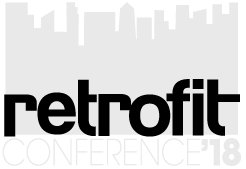What You Can Expect
2018 Program
Premier conference strictly focused on retrofitting commercial, industrial and institutional buildings.
Schedule of Events
- 8:00 AM Onsite Registration/Check-In
- 9:00 AM Welcome and Opening Keynote: Galina Tachieva, managing partner, DPZ CoDESIGN
- 10:00 AM Networking Break in Tabletops Area
- 10:15 AM Educational Session 1: Energy-efficient Building Envelope
- NOON Lunch in Tabletops Area
- 1:00 PM Educational Session 2: Retrofitting in Today’s Market
- 2:15 PM Networking Break in Tabletops Area
- 2:30 PM Afternoon Keynote: Ryan Colker, vice president, National Institute of Building Sciences
- 3:30 PM Educational Session 3: Resilient Buildings
- 5:00 PM – 7:00 PM Cocktail Reception in Tabletops Area
What Are You Waiting For?
Top Reasons to Attend.
You will leave this one-day event with ideas and solutions you can immediately execute in your daily and professional life. Consider the following:
- Premier conference strictly focused on retrofitting commercial, industrial and institutional buildings.
- Information on funding mechanisms for retrofitting.
- Tips for building enclosure efficiency and commissioning.
- Local and nationwide retrofit success stories.
- Knowledgeable exhibitors to help you meet retrofitting goals.
- Relationship-building opportunities.
































